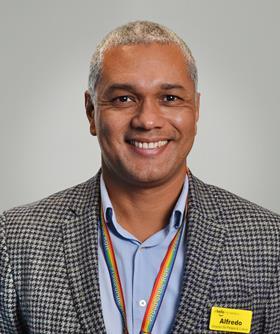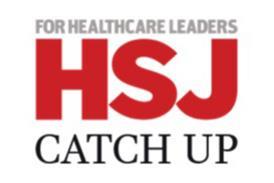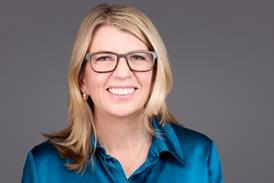Alfredo Thompson, executive director of people & culture at Royal United Hospitals Bath Foundation Trust, discusses how the partnership with Locum’s Nest has driven RUH to achieve £1.3m in cost-avoidance savings, as well as streamline operations, enhance efficiency, and prioritise the well-being of their staff

Sponsored by
In a candid conversation with Alfredo Thompson, executive director of people & culture at Royal United Hospitals Bath Foundation Trust, we gain valuable insights into the strategies and initiatives that have propelled RUH to achieve £1.3m in cost-avoidance savings within three months of partnering with Locum’s Nest. Discover how RUH harnessed the power of workforce technology to streamline operations, enhance efficiency, and prioritise the well-being of their staff.
What were the key strategies that contributed to the £1.3m cost-avoidance savings at RUH?
We are a “People” organisation. We are committed to making sure the “People we work with” have the best experience so that they in turn offer the “People we care for” the best experience possible. To achieve this, we believe in speaking directly to our staff and treating them like valued customers. We listened to our staff’s feedback, which highlighted the need for better technology. We chose Locum’s Nest and witnessed rapid adoption within weeks, and in the following months, we also joined the Somerset, Wiltshire and Gloucestershire Collaborative Staff Bank which further accelerated our progress.
The result? Plummeting agency spend, reduced reliance on agency staff, and a more resilient contingent bank workforce. Our substantive workforce became eager to contribute further, fostering a positive impact on our trust. These changes have been instrumental in improving our overall workforce dynamics and have contributed to our success.
How has the adoption of technology-enabled data analytics enhanced workforce performance monitoring and HR strategies at RUH?
Previously, workforce data was fragmented, and analysis was a manual and time-consuming task. However, we now have easy access to comprehensive data, enabling data-driven decision-making and faster and more accurate reporting to our internal customers and external stakeholders eg NHS England.
We can now monitor and evaluate key performance indicators with greater accuracy and efficiency. This enables us to identify areas for improvement, implement targeted interventions, and measure the impact of our People strategies. The availability of data has empowered both frontline staff and management to make informed decisions and drive continuous improvement.
What benefits has RUH gained from joining the SWaG collaborative bank?
Since joining the SWaG collaborative bank over six months ago, RUH has experienced significant benefits in terms of expanding the pool of healthcare workers and fostering collaboration with neighbouring trusts. The implementation of collaborative bank technology has had a positive impact on the people we work with, as evident from feedback and testimonials received from healthcare workers. Doctors have expressed that the ability to support their colleagues across multiple trusts has eliminated the need to work through agencies solely for access to different trusts. This has improved workforce satisfaction, as doctors appreciate that no cuts are being taken from their pay for the work they perform.
Moreover, the visibility of staffing needs and demand across the trust has significantly improved with the implementation of collaborative bank technology. This enhanced visibility has facilitated more effective workforce planning and resource allocation. Rota coordinators have benefited greatly from the platform’s ability to provide clear visibility of shifts. As a result, they are now more confident in their planning and no longer need to spend excessive time contacting colleagues via phone or text. This newfound efficiency, allows rota coordinators to focus on more productive tasks, contributing to the futureproofing of the trust and increasing overall productivity, such as supporting the planning of WLI clinics and theatre lists.
How do you foresee the application of collaborative bank technology in other areas within RUH, and what potential impact can it have on workforce management and patient care?
Given the success and positive feedback we have received; the collaborative bank model works well and is highly appreciated by our staff. This has also demonstrated how easy it is to collaborate across our Acute Health Alliance network.
What role do you envision technology, such as collaborative bank platforms, playing in shaping the future of healthcare workforce management?
With the increasing demand for healthcare workers and the inability to instantly produce more, collaboration becomes essential. By leveraging technology and embracing collaborative bank platforms, we can pool resources, share expertise, and ensure improved staff experience while also contributing to the delivery of quality care. This allows us to move away from competition and prioritise collaboration, reinforcing the core values of the NHS. As we navigate the future, technology will be a key enabler in creating a sustainable and effective healthcare workforce ecosystem.
What are the key challenges in integrating technology while maintaining a people-centred approach?
Our main challenge is ensuring a seamless integration of technology while maintaining a people-centred approach. It’s not just about the technology itself or its integration; our goal is to use technology to enhance and simplify people’s lives rather than replace or complicate them. As leaders, we must acknowledge that what worked in the past may not be suitable for the present and future. The workforce has evolved, seeking more autonomy and valuing flexibility, and our technology solutions must align with these changing needs.
Schedule a consultation with our team at Locum’s Nest for a comprehensive assessment of your healthcare staff bank and agency approach.
Harnessing open workforce technology to enhance NHS staff wellbeing
- 1
- 2
 Currently reading
Currently readingEmpowering workforce and boosting savings: RUH’s remarkable £1.3m success story
- 3
- 4
- 5






























